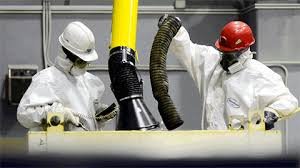
The future of nuclear power depends on safe disposal at a reasonable cost. Thus diverse, innovative and laden with practical problems experience might become instructive to the nations and industry players.
The innovative technology for preparing radioactive waste (RW) produced as a result of processing spent nuclear fuel (SNF) for safe storage was developed by scientists of Siberian Federal University, Russian Academic excellence program (Project 5-100) participant.
Today the safest way to handle radioactive waste is to dispose of it for a long time after a special radioactive waste solidification or cementing process. However, as a result of this process, partially soluble sediment remains in the pulp: this is liquid waste which must be eliminated from waste storage facilities prior to the disposal.
According to one of the authors of the study, Professor of SibFU, PhD in Engineering Vladimir Kulagin, when cavitation microbubbles burst during cavitation of substances which are not easily soluble in water, due to a change in its physicochemical properties (activation) and other effects, such as high-pressure fields, temperatures and impacts, even very strong minerals such as diamond are damaged.
The method developed by SibFU scientists allows destroying dense formations that are insoluble in water and settle on the bottom of a tank with SNF, by eroding the sediment with acid solutions based on water activated by cavitation.
"Our method provides for higher dissolution velocity and allows eliminating about 1.5 times more sediment compared with the traditional method. And when mixed in a cement matrix, cavitation of water used for production of cement compound with the inclusion of radiochemical production waste doubles or triples the strength of the cement stone compared with the solution prepared in a traditional way," said Vladimir Kulagin.
According to him, studies of real and modeled pulp were conducted in the laboratories of Rosatom’s Mining and Chemical Combine in Zheleznogorsk (Krasnoyarsk Territory), and experiments with cavitation of water were performed in the laboratory of Siberian Federal University.
"Preliminary results of decontamination of radioactively contaminated equipment have already been obtained and they confirm that cavitation used for handling particularly hazardous waste, for example, when decommissioning nuclear facilities, is a promising technology. There is also a preliminary agreement on continuing this work and increasing the range of tasks for which cavitation may be used," concluded Mr. Kulagin.
The scientists published the paper about their work in the Chemical and Oil and Gas Engineering magazine, which was published in the USA in the Chemical and Petroleum Engineering magazine, a translated version of the Russian publication.



